Flea Eggs on Dogs: Everything You Need to Know About Them
Flea eggs are challenging to identify compared to adult fleas, but spotting flea eggs is vital for effective flea control. By understanding fleas’ life cycle and how to spot and eliminate fleas on dogs, pet owners can take proactive measures to keep dogs flea-free. This article provides insights into detecting and preventing flea eggs, and treatment options to ensure health and comfort of dogs.
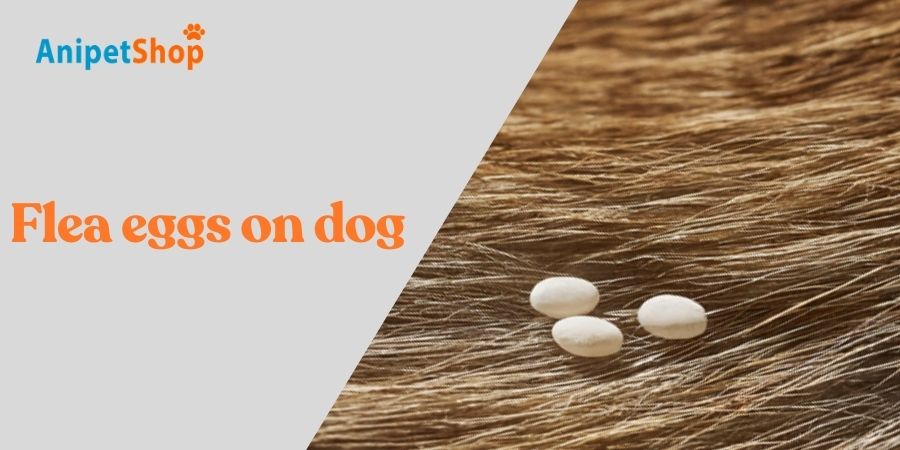
What are Fleas and Its Lifecycle?

Fleas are small, parasitic insects feeding on the blood of dogs. They cause various health issues, such as skin irritation, allergies, and even anaemia. The flea life cycle consists of four stages: egg, larva, pupa, and adult. Breaking the cycle of fleas is crucial for long-term flea control as a single adult flea can lay hundreds of eggs.
Spotting Flea Eggs on Your Dog
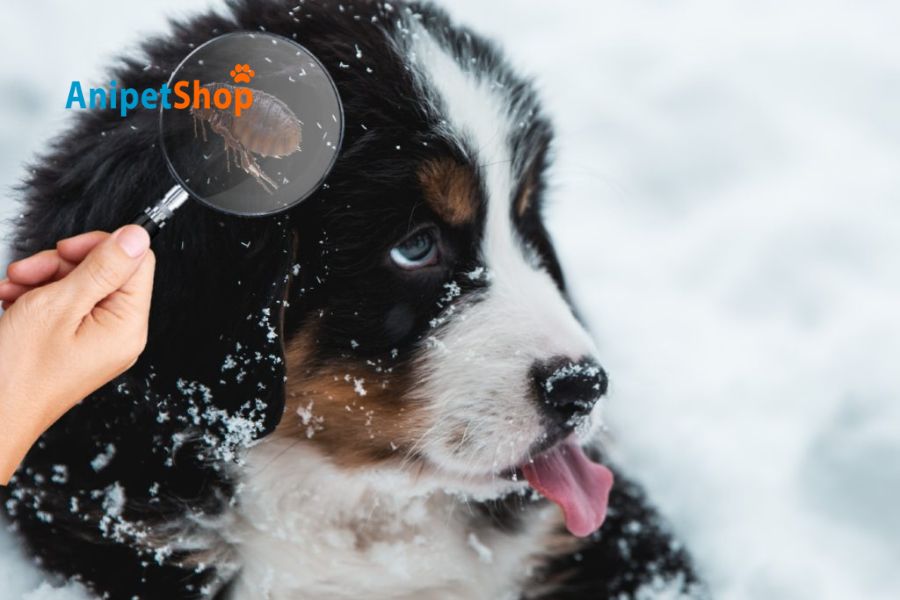
Spotting flea eggs on dog can be challenging considering different fur types and colours. There are some key areas where flea eggs are commonly found: around the neck, behind the ears, along the back, and near the base of the tail. Regularly inspecting these areas and closely examining your dog’s fur can help identify flea eggs.
What Do Flea Eggs Look Like?
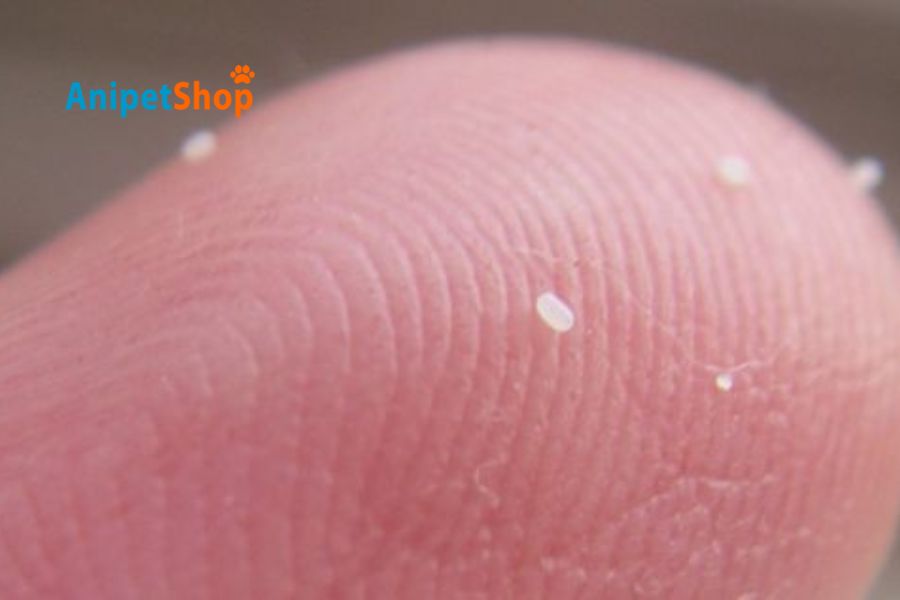
Flea eggs are incredibly tiny, about 0.5 millimetres in length, and can be misidentified as grains of salt. Flea eggs have an off-white colour and a soft shell, which differentiates them from grains of salt.
In most cases, pet parents do not recognize flea eggs as a sign of an infestation initially. It’s important to note that flea eggs can be easily mistaken as dry skin flakes or sand due to their size and colour.
What Do Flea Larvae Look Like?
Flea larvae are the next stage of flea eggs. They are off-white and have a worm-like appearance, typically from 2 to 5 millimetres in length. Unlike flea eggs usually found on the dog’s fur, flea larvae tend to burrow into dark, moist areas such as deep carpet fibres, cracks in the floor, or underneath furniture.
How Long Do Flea Eggs Take To Hatch?
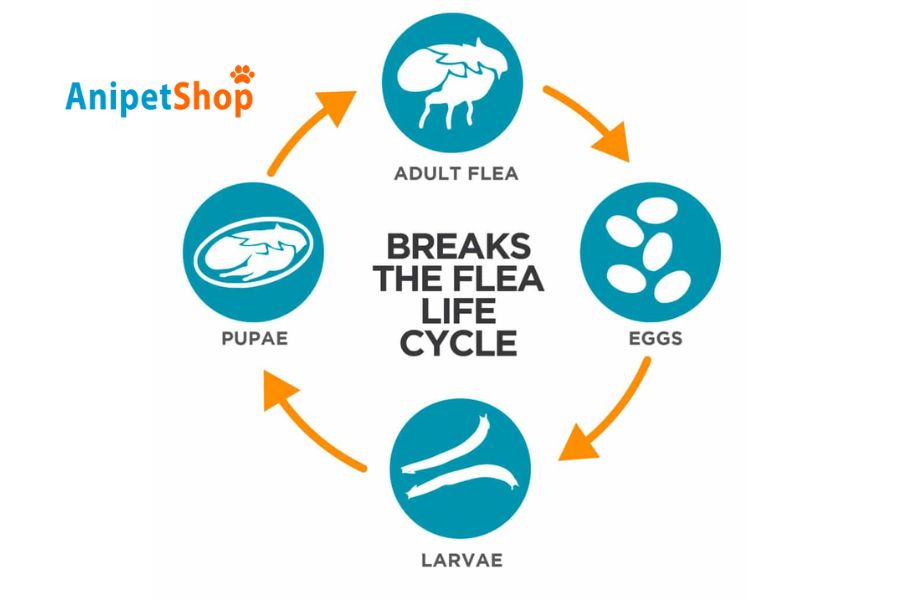
Flea eggs hatch at different times depending on a number of variables, including humidity and temperature. Flea eggs can hatch in 1-2 days under optimum conditions, which include high humidity levels of 70-85% and temperatures of 70-85°F (21-30°C). However, in normal conditions, flea eggs can develop in as little as two to fourteen days. Flea eggs develop more slowly in cooler, dryer settings, and they might lay dormant for weeks or even months at a time. The necessity of ongoing management and environmental treatment to avert infestations in the future is highlighted by this dormant phase.
Flea Eggs vs. Flea Dirt

Two key markers of dog flea infestations are flea eggs and flea filth. Despite their minuscule size, flea eggs are an essential part of the flea life cycle.
They are little, off-white objects with an oval form. Flea dirt, on the other hand, is the term for flea feces and is distinguished by its crumbly, black look. Dog owners can successfully detect and manage flea issues by being aware of the traits of flea eggs and flea filth.
The key to differentiating flea filth from flea eggs is visual recognition. It is possible to distinguish flea filth by its color and texture. It’s crumbly and has a black, pepper-flakes-like appearance. One easy test to prove the existence of flea soil can be performed. Put suspected flea filth on a sheet of white paper, then drizzle with a little water. Flea dirt is confirmed if the specks turn crimson from the blood that has been absorbed.
A dog with fleas is obviously infested if there is flea filth on them. Although flea dirt doesn’t always pose a health risk, its existence suggests that more thorough flea treatment is required than just bathing. It means that adult fleas are on the dog and that they are feasting. Ignoring flea dirt can result in an unregulated infestation that puts the dog’s health at risk and causes discomfort. To get rid of fleas, you should act quickly. This includes treating the dog, cleaning the surroundings, and getting advice from a veterinarian on the best ways to control fleas.
Dogs Flea Symptoms
Dog flea infestations can result in a variety of obvious symptoms that point to the existence of these bothersome parasites. Dogs with fleas frequently itch and scratch excessively, biting and gnawing at their skin in addition. Dogs that experience discomfort from flea bites are prone to restlessness and agitation. By recognizing these obvious signs, dog owners may determine whether there may be a flea infestation and take the necessary action to make their pet more comfortable.
Dog flea infections can cause a variety of indirect symptoms in addition to the acute ones. It is common to notice skin irritation and redness in the affected areas, as well as hair loss. Dogs who chew and scratch excessively may get hot areas and scabs. Additionally, flea allergy dermatitis, an allergic reaction to flea bites that can cause excruciating itching, inflammation, and secondary skin infections, might affect sensitive dogs. In severe situations, fleas can deplete their host’s red blood cells, which can result in anaemia in dogs.
Not only can direct and indirect symptoms offer important information about a potential flea infestation, but there are other telltale signs as well. The dog’s fur contains flea filth, which looks like dark, pepper-flakes-like particles. The presence of fleas is evident from these particles, which are actually flea feces. Furthermore, observing adult fleas on the dog’s skin or fur is unmistakably evidence of a flea infestation. Dog owners can promptly address the flea problem by identifying these extra signals and putting the right treatment and prevention measures in place.
Effective Removal Strategies
On Your Dog
Safe flea shampoos can help kill fleas and remove some eggs from your dog’s coat. Using a fine-toothed flea comb to manually remove adult fleas and their eggs is another efficient way to eradicate fleas.
In Your Home
Keeping your home clean is essential. Flea eggs and larvae can be removed from carpets, rugs, and upholstery by vacuuming them and cleaning the floors. Fleas and their eggs can also be eliminated by washing blankets and bedding for pets in hot water.
When to Call the Veterinarian
See a veterinarian if your dog has a serious flea infestation or if the usual preventative and removal techniques are failing. In order to properly handle the flea problem, they might offer specific goods or drugs as well as advice on appropriate treatment choices. Veterinarians can also offer guidance on extra preventive steps you can take to shield your dog from fleas and their eggs.
Prevention and Control
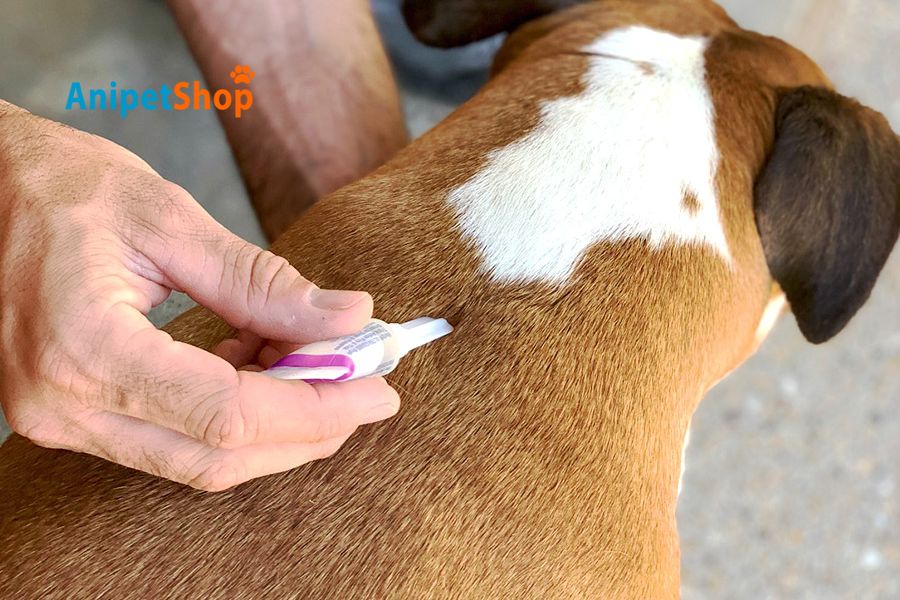
1. Topical Treatments and Oral Medications:
Topical treatments and oral drugs are frequently used in the fight against fleas in dogs. By stopping flea eggs from hatching or developing into adults, these products function. While over-the-counter medicines are effective for minor infestations, prescription choices are more potent and necessitate veterinary care.
2. Natural and Holistic Approaches:
Diatomaceous Earth has been a popular alternative for natural techniques. It’s a powder that kills fleas and dehydrates them. While some essential oils, like lavender, can be toxic to dogs, use caution when using them as repellents. Rinse after bathing with diluted apple cider vinegar.
3. Regular Grooming and Cleaning
Frequent washing and grooming are necessary to keep fleas at bay. Regularly check your dog’s skin and fur for flea infestations. To get rid of adult fleas and detritus, use a flea comb. To prevent flea eggs and larvae, vacuum carpets and furniture often, wash pet bedding at high temperatures, and maintain a clean atmosphere.
FAQs
Can you see flea eggs on dogs?
Yes, you can see flea eggs on dogs, but it can be tricky. They are tiny, white, oval-shaped, and quite smooth. This means they don’t stick to fur well and easily fall off. You might find them mixed with “flea dirt”, which looks like little black specks of pepper and is actually dried flea excrement.
What kills flea eggs on dogs?
Sadly, not many products kill flea eggs directly. The eggs have a tough outer shell that protects them from most insecticides. The best way to eliminate flea eggs is by focusing on adult fleas and breaking their life cycle. Use flea shampoo, topical treatments, or oral medications to kill adult fleas on your dog, preventing them from laying more eggs. Additionally, you’ll need to thoroughly clean your home by vacuuming and washing your pet’s bedding to remove fallen eggs and larvae.
How long do flea eggs stay on dogs?
Flea eggs don’t stay on your dog for long. They are designed to fall off and hatch in the environment, typically within a few days. The more active your dog is, the quicker the eggs will fall due to movement and scratching.
Can my dog have flea eggs but no fleas?
Yes, it’s possible for your dog to have flea eggs even if you don’t currently see adult fleas. Your dog might have picked up the eggs from another infested animal or environment. It’s also possible that adult fleas recently hatched and left your dog, with eggs lingering for a short period. Remember, even the presence of flea eggs signals an infestation, so it’s crucial to act quickly and treat your dog and your home to avoid a larger problem.
Conclusion:
Maintaining your dog’s health requires you to comprehend flea eggs and their importance in flea control. You can keep your dog friend flea-free by being able to identify flea eggs, distinguishing them from other materials, and putting good preventative and treatment plans in place. In order to ensure the finest flea control methods for your dog, don’t forget to get personalised advice and help from a veterinarian.
Lily Watson is an author specializing in veterinary care in Australia. With a profound passion for animal welfare and a solid foundation in veterinary science, Lily has dedicated herself to disseminating valuable knowledge and information for both pet owners and professionals in this field.

